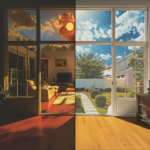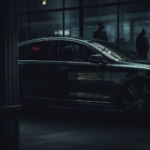
In the wake of the recent ticketing of George Zimmerman, the man acquitted in the shooting death of Treyvon Martin, more and more people are wondering about the window tint laws in their states. How dark is too dark when it comes to window tint?
Zimmerman’s Traffic Stop
Zimmerman was stopped at 11am in Brevard County, Florida on Interstate 98 last month not only for windows that were tinted too darkly, but also because his license plate was obscured by a tinted cover. The officer told Zimmerman that the tinting was illegal, and that the plate cover made the numbers difficult to read, something that must be corrected immediately. Zimmerman noted that the tinting had been put into place after a number of death threats that he had received in the wake of the shooting of 17-year-old Treyvon Martin back in February of 2012, which he claimed he had done in self-defense.
Why is Dark Tint Illegal?
While dark window tint is illegal in many states, people often want to know why. After all, these are their vehicles and they are entitled to some privacy if they so choose – aren’t they? While some states cite that they have banned dark tint because it obstructs the driver’s view, drivers aren’t buying it. Window tint rarely causes any obstruction of view from inside the car. In other states, it is claimed that the dark tint obstructs the view of the driver, which makes it impossible for automated traffic cameras to do their jobs. Finally, it is also claimed that this is dangerous during traffic stops because the officer cannot see the driver and any weapon that may be in hand.
Another Claim
Another popular claim to the illegality of dark window tint is that it provides a protective coating over the window that makes the windows harder to break. Thus, if an accident occurs, rescue personnel would have a difficult time extracting the driver or any passengers from the car via the windows. Of course, this leaves only one question: why is only dark window tint illegal? If it were true, wouldn’t all window tint be illegal, regardless of how light it is?
Understanding the Laws
Regardless of the reasons, almost every state has put laws into place regarding the reflectiveness of the tint that is placed on windows, how dark it can be, and even what colors can be used. In the state of Florida where Zimmerman was stopped and fined, windows can be no more than 25% reflective, front side windows must let in 28% of light, and the back side and rear windows must let in at least 15% of light. No tint colors are banned here, and there are medical exemptions for people who may need certain types of window tint in order to safely drive.
So, the answer to the question “how dark is too dark?” primarily depends upon the laws in the individual state. While some states allow for significantly dark tinting, others are stricter, and only allow for very light tinting. You can check the laws in your state online.






Comments are closed.